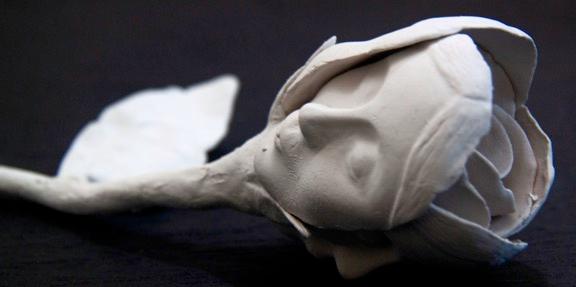
1 minute read
Gayi Soori RCA


Advertisement
London based, she was a practising dentist for 10 years, before studying ceramics at Central Saint Martins.
The work chosen for research is the Bartmann (bearded man) bottle, a 17th Century salt-glazed stoneware vessel. In addition to their practical usage for storing liquids, they developed a secondary function as witch bottles. Intended to act as a counter-spell or protection against witchcraft.
She researched the social beliefs surrounding their use, including misogyny, superstitions and explored how an everyday item may become a ritual object. The technique used was similar to one that would have been used to make the small bearded man masks for Bartmann bottles. Her own interpretation, called ‘Chloris’ draws upon the subject of femicide, fatal male violence against women and girls. A single delicate, unfired porcelain rose, each petal bears the face of an unknown woman.
She worked with the imagery of a single rose in part for the common association with love and romance. The tragic fact is that for women who are murdered today, the perpetrator is most often a man who was supposed to love her, a partner, former partner or family member.
The title of the work, Chloris, refers to the Greek goddess of Spring and flowers. The classical myth of the origins of the first rose tells of Chloris discovering the lifeless body of her most beloved woodland nymph. Overcome by grief Chloris calls upon the other gods to transform the dead nymph into the most beautiful of flowers, a rose.

Top: Bartmann V&A 17th Century stoneware bottle. 22cm x 14cm.
Left: Gayi Soori. Chloris










